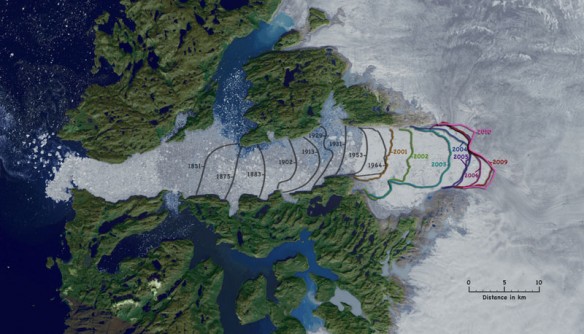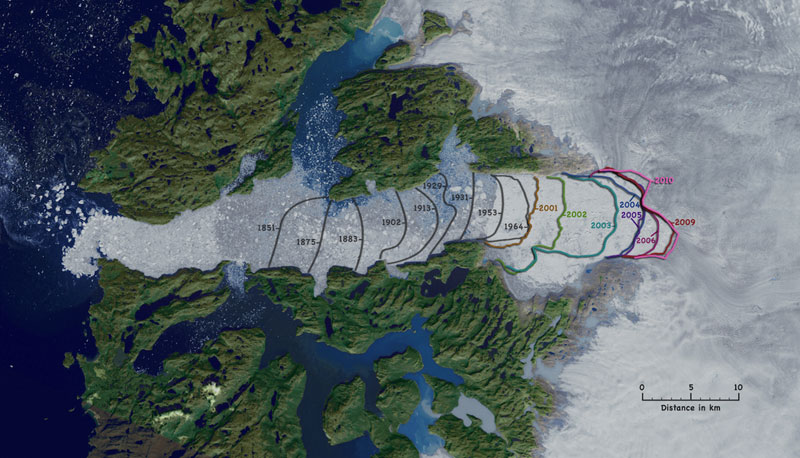
Jakobshavn Calving Front, Retreat from: 1851 to 2010.
The Jakobshavn Isbrae glacier, also known as Sermeq Kujalleq, is located on the west coast of Greenland at Latitude 69 degrees N. The ice front, where the glacier calves into the sea, receded more than 40 km between 1850 and 2010. Between 1850 and 1964 the ice front retreated at a steady rate of about 0.3 km/yr, after which it occupied approximately the same location until 2001, receding 10km in three years. After 2005 the single icefront had retreated enough to split into distinct fronts for the smaller, northern tributary and the main southern trunk. The icestream flows in a deep trough which ends near the current glacier terminus.The movement of ice from glaciers on land into the ocean contributes to a rise in sea level. Jakobshavn Isbrae is Greenland’s largest outlet glacier, draining 6.5 percent of Greenland’s ice sheet area.
Captions and Image source: Goddard Space Flight Center / NASA
Excerpts;
Jakobshavn Isbræ (Jakobshavn Glacier) is moving ice from the Greenland ice sheet into the ocean at a speed that appears to be the fastest ever recorded. Researchers measured the dramatic speeds of the fast-flowing glacier in 2012 and 2013…
Read Full Article, Science Daily
Jakobshavn Glacier Retreat, 2010, NASA / Earth Obserbvatory
For most of the past century, the Jakobshavn Glacier, or Jakobshavn Isbræ, along the west coast of Greenland has extended out into the ocean as a long, narrow ice tongue. The glacier drains a large portion of Greenland’s ice sheet, and consequently, the glacier has the potential to contribute more to sea level rise than any other single feature in the Northern Hemisphere. On July 6–7, 2010, the glacier retreated by roughly 1 mile (1.5 kilometers). By itself, this breakup was not dramatic, but it continued a pattern of calving and retreat followed by ice flow acceleration that began nearly a decade ago…









